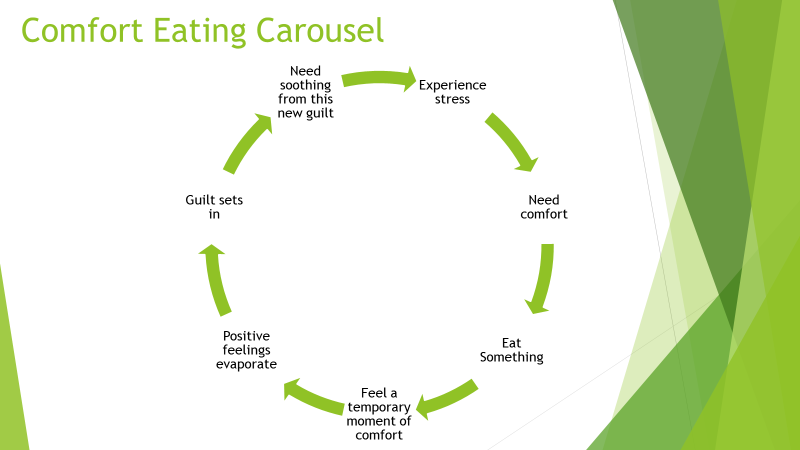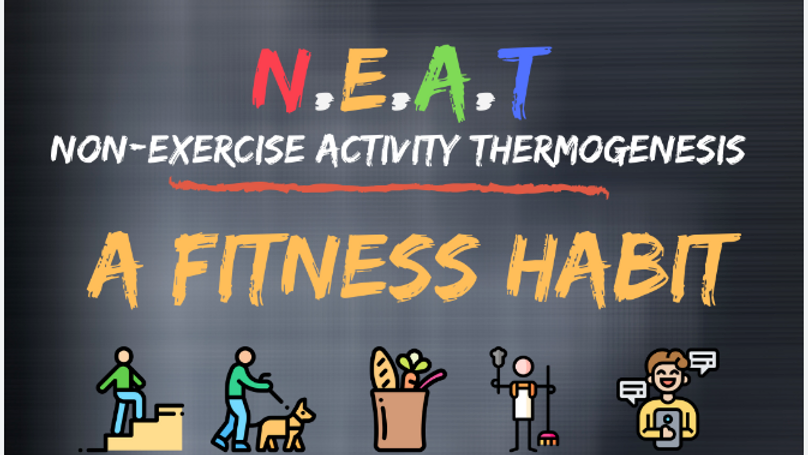Facilitated by Dr. Michelle Coker, Clinical Psychologist
One of the triggers for eating is our emotions. We use food to soothe ourselves in many stressful situations, but it can be controlled with some awareness. Dr. Coker talked about a simple way to clarify why we are eating called HALT:
H – Hungry: Do I need something physically or emotionally? Find what will fill you.
A – Angry: What is causing me to feel this way? Express yourself.
L – Lonely: Am I having difficulty connecting with others? Tell someone.
T – Tired: When was the last time I took a break? Breathe and slow down.
When you find yourself eating when you are not hungry, you need to stop and ask yourself if you are really experiencing one of the above feelings. If you continue to eat during those times, you will find yourself on an emotional eating merry-go-round:
The problem with soothing ourselves with food is that that good feeling only lasts a moment, and then is replaced with guilt causing more stress and continuing the cycle. Some common reasons for emotional eating are:
- The feel good fix
- Stress and effort to re-balance
- Prolong pleasure
- Accessibility
- Media diet
- Sheer boredom
- Habit
- Distraction
- Ignoring internal cues
- Impulsive
In order to change our behavior we have to look at the steps involved in changing habits:
- Pre-contemplation – think about what you want to change and why
- Contemplation – figure out what you want to do instead
- Preparation – get yourself mentally ready and geared up to make the change; talk to someone about it, get support for making the change
- Action – make the change
- Maintenance – continue to work on keeping the change by rewarding yourself with non-food rewards.
In order to make the change, learn to “Be” more aware of what is going on with you:
- SIT with your feelings. When you want to go eat, first do the following:
- Stop – just stop for a moment
- Inspect – inspect your feelings and why your may be feeling hungry (are you Hungry, Angry, Lonely or Tired)
- Take a breath – once you have let the moment pass, address the real feeling you are having.
- Recognize your own negative self-talk. We have a lot of negative things we say to ourselves over and over.
- Name the critical voice – who is talking to you (is it something your mom, husband, friends says to you)
- Be curious, not critical – why are they saying it
- Is it true? Probably not
- Distance yourself from the thought and shift the negative talk to how you wish to feel
- You can begin to soothe yourself with positive self-talk (Vincent VanGogh once said, “if you hear a voice within you say, you cannot paint, then by all means paint, and that voice will be silenced.”)
- Eat Mindfully. When you do eat, sit down, slowly chew, sense and savor the food, and smile!
- Consciously choose distraction during those trigger moments. Write down and keep handy:
- 5 people to call
- 5 ways to relax
- 5 places to go calm down
- 5 encouraging statements to tell yourself
- 5 activities that will keep you otherwise busy & distracted
Food is not the enemy. Anger, sadness, regret and lack of self love are.
Watch the TED Talk video on breaking habits at:
https://www.ted/com/talks/judson_brewer_a_simple_way_to_break_a_bad_habit









